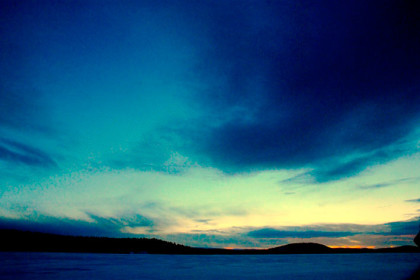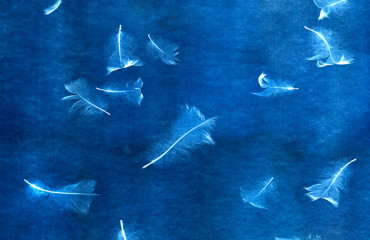
“There are routes in the sky that guide the birds but that men cannot see. There are routes in the sea along which fish move. But men cannot see them. There are lines that join the heaven to the earth, but men do not see them. But the divine eye sees them”. This is (if I remember correctly, since I can not find the source) the wonderful passage in a letter that Nichiren Daishonin, the Shramana of Japan (as he liked to call himself), an eighteenth-century Buddhist monk writes to his followers during one of his numerous exiles in the search of truth. Allow me to add; hoping not to seem irreverent, “There are images in the silence that open gates to the most remote depths of ourselves, but men can not see them”
The music of the Sami, in some ways a mysterious population who for centuries lived with the harsh winters of Lapland and that are now at risk of extinction, try to describe themselves with Ancient Songs that evoke feelings that are also in danger of extinction. Yoik is archaic music that uses the voice to produce sounds that try to describe the invisible and that, along with the percussion, are very reminiscent of the songs of the Native Americans. Today, these yoik songs are sometimes (not always) contaminated, but with mastery, with jazz, pop, blues and other musical genres. The lyrics are fairly reduced and tell of, just like many other folk songs, everyday life, people or places. Often there are no lyrics and the music is only sounds produced with the voice like some mantras.
The Sami, Mongols, and in general Siberian or Northern populations, but also Native Americans, according to the most accredited anthropological hypothesis, are somehow linked to a Asian archaic common matrix. For centuries, the Sami have lived in a vast area between Norway, Sweden, Russia and Finland devoting themselves to hunting, harvesting and reindeer herding, animal with whom they have an indissoluble relationship. Their songs and rhythms are mainly associated with the shamanic trance and with which you can go into very deep exploration of emotions and visions that come from listening to ourselves. Usually, this listening is made possible by silence, both inner and outer.
In the regions beyond the Arctic Circle, sparsely populated and wild areas that are covered with snow and ice for several months a year, this silence is natural. If you spend your whole life there, you need to learn to live with it, love it and use it often. If you go on a trip or on an exploration, you can learn to know and treasure it to discover inner possibilities that you may have thought to be dormant.
www.fermoeditore.it
 English
English  Italiano
Italiano 


